The Vault is Slate’s history blog. Like us on Facebook, follow us on Twitter @slatevault, and find us on Tumblr. Find out more about what this space is all about here.
This group of illustrations are five of 25 that made up John Vassos’ 1931 book Phobia. The work, published as a limited-edition art book, was a labor of love. In it, Vassos developed his elongated Art Deco visual style, while advancing a critique of modern urban life.
Vassos, who emigrated from Greece in 1918, was a prolific designer who worked in many media, mostly earning his living through commercial commissions. He designed shop windows, stage sets, and murals for cinema lobbies. He illustrated ads for department stores, Packard automobiles, and French Line cruise ships.
Later, he became an industrial designer, creating packaging for consumer goods, and housing for consumer electronics. He planned the RCA pavilion at the 1939 World’s Fair, including the famous Lucite television meant to convince skeptical viewers that TV images came from the air, rather than from a miniature projector inside the set. Vassos eventually worked for RCA for more than forty years.
In the forward to the 1976 Dover edited collection of excerpts from Vassos’ art books, used copies of which are the best way to see more of Vassos’ artwork, P.K. Thomajan writes that Hollywood directors were devotees of these limited-edition books, looking to them for visual inspiration. Whether or not that’s true (Thomajan doesn’t cite a particular director), the images in Phobia, Contempo (1929), Ultimo (1930), and Humanities (1935) feel quite cinematic. Ultimo, the text of which was written by Vassos’ wife Ruth, even tells a complete science-fictional story.
While Phobia doesn’t have a narrative, it does lean on visual representation to convey extreme emotion. Vassos wrote in the introduction to the book: “A phobia is essentially graphic. The victim creates in his mind a realistic picture of what he fears, a mental image of a physical thing.” The streamlined style of his imagery conveys the dizzying height of buildings and the rush of oncoming automobiles.
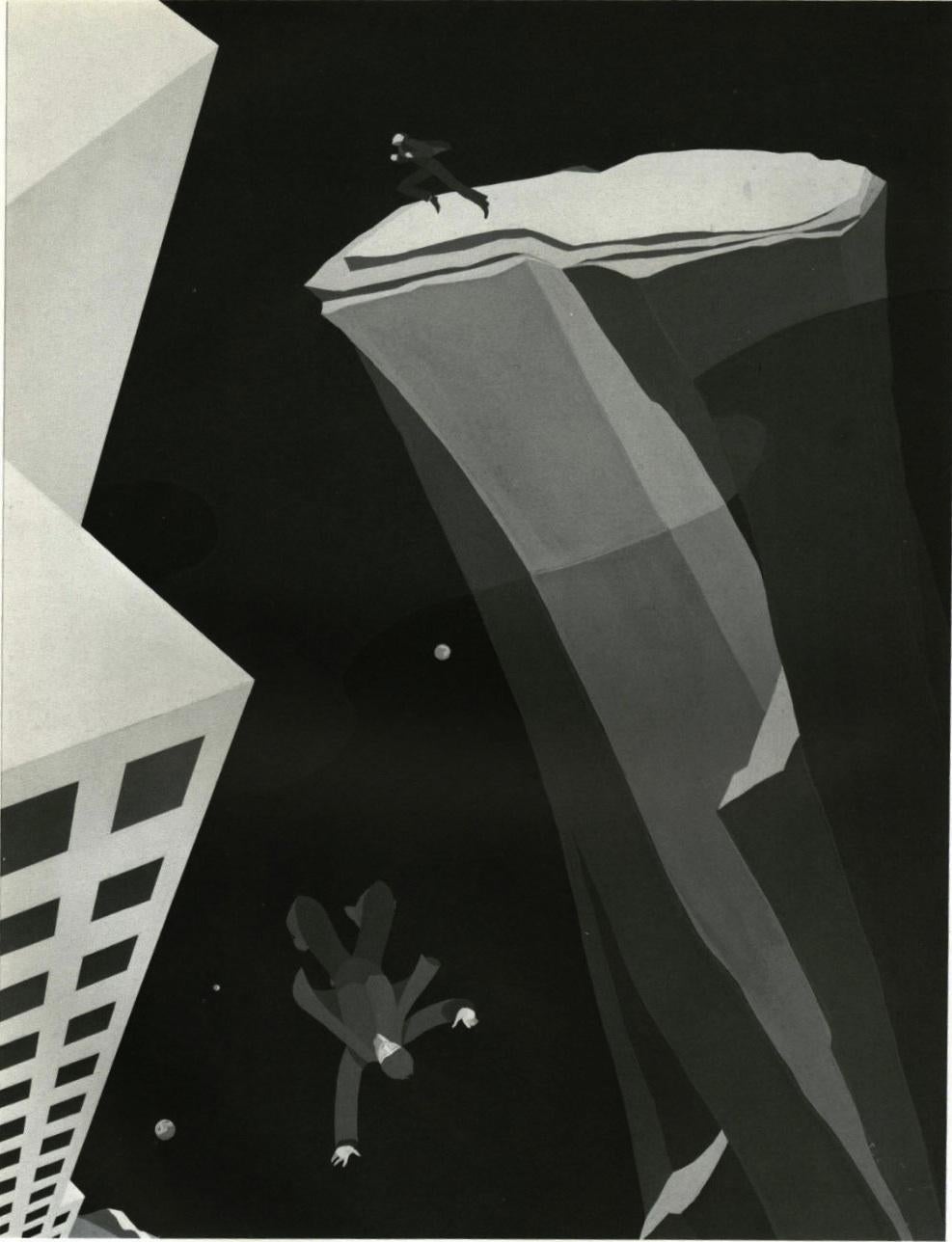
John Vassos, Phobia, 1931.
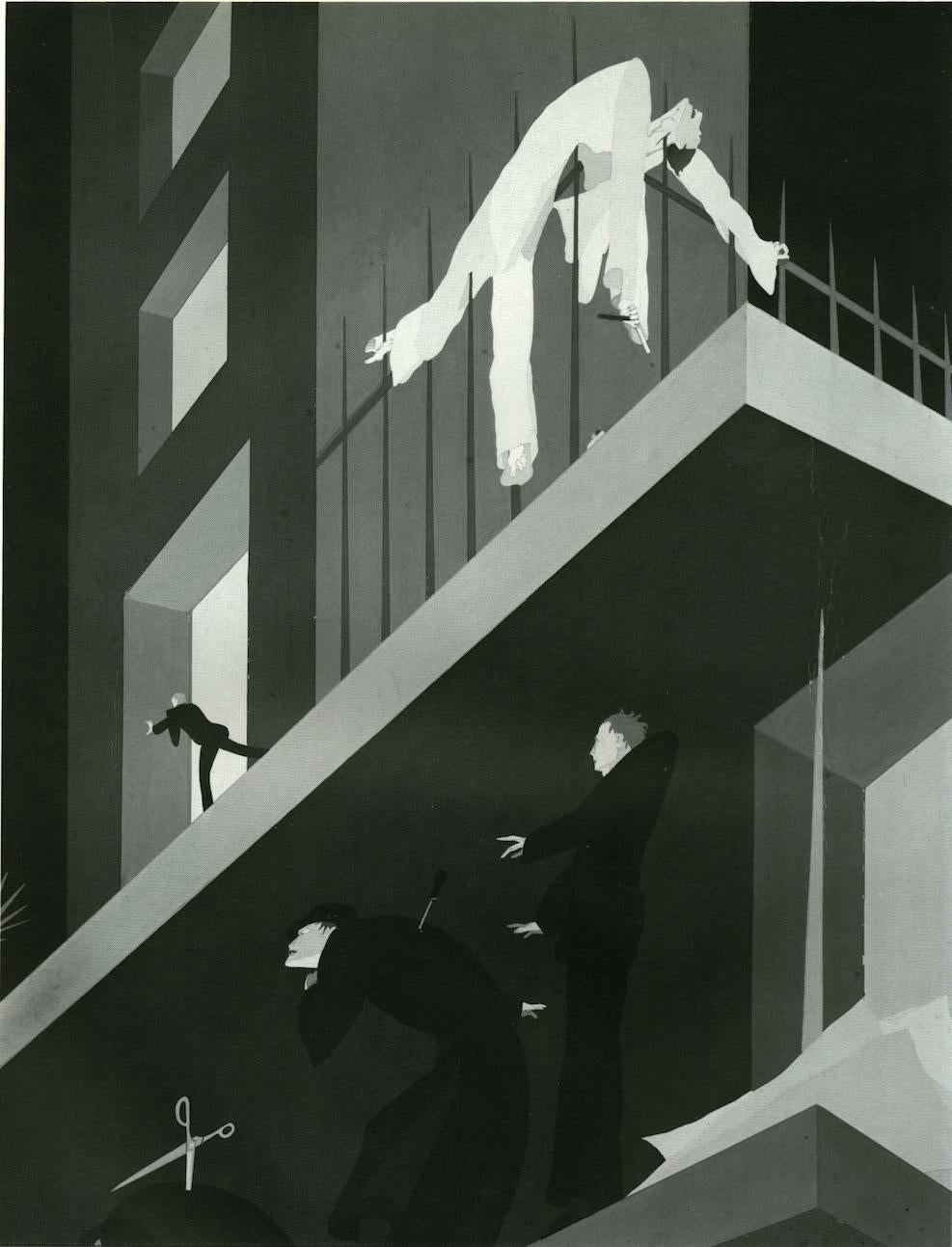
John Vassos, Phobia, 1931.
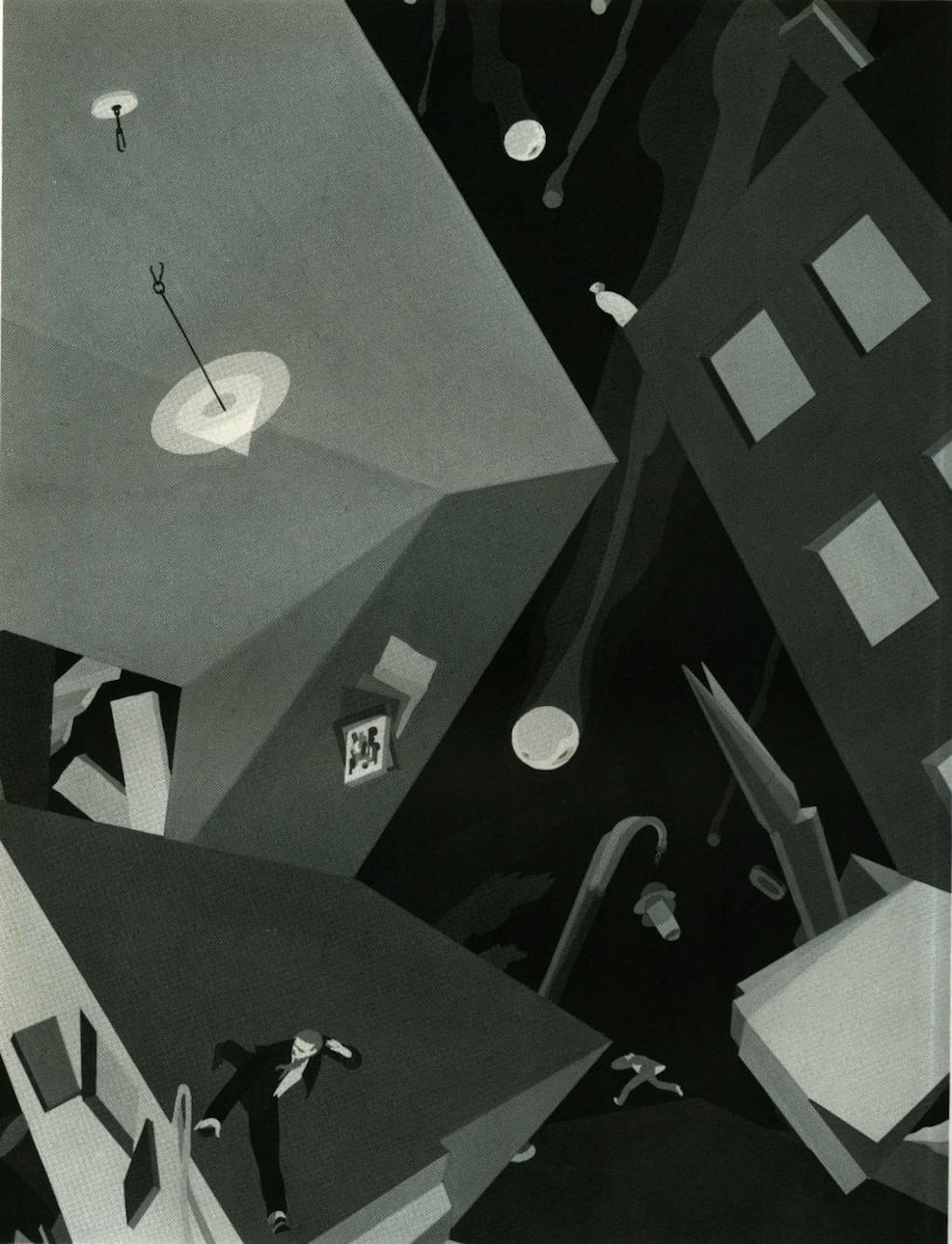
John Vassos, Phobia, 1931.
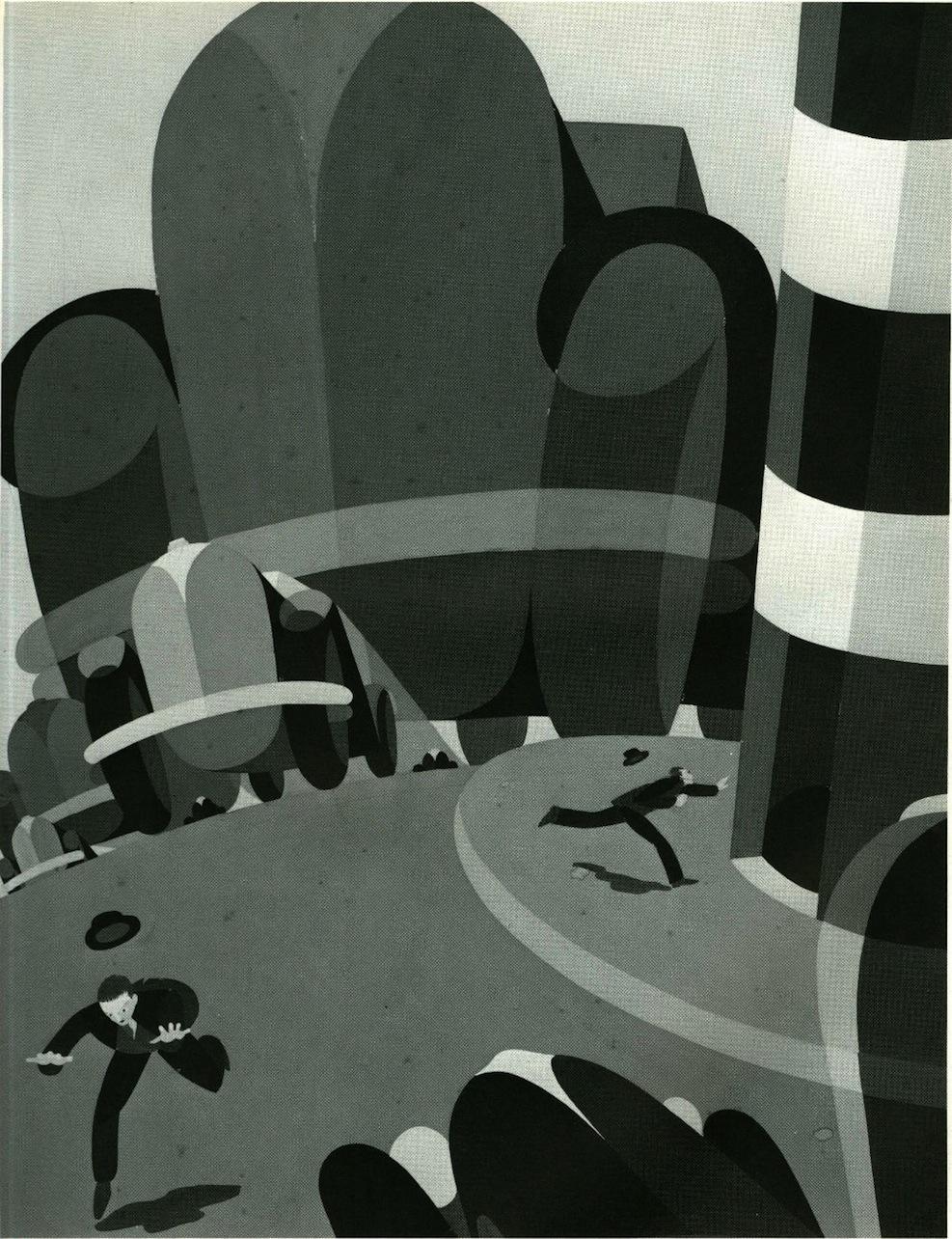
John Vassos, Phobia, 1931.
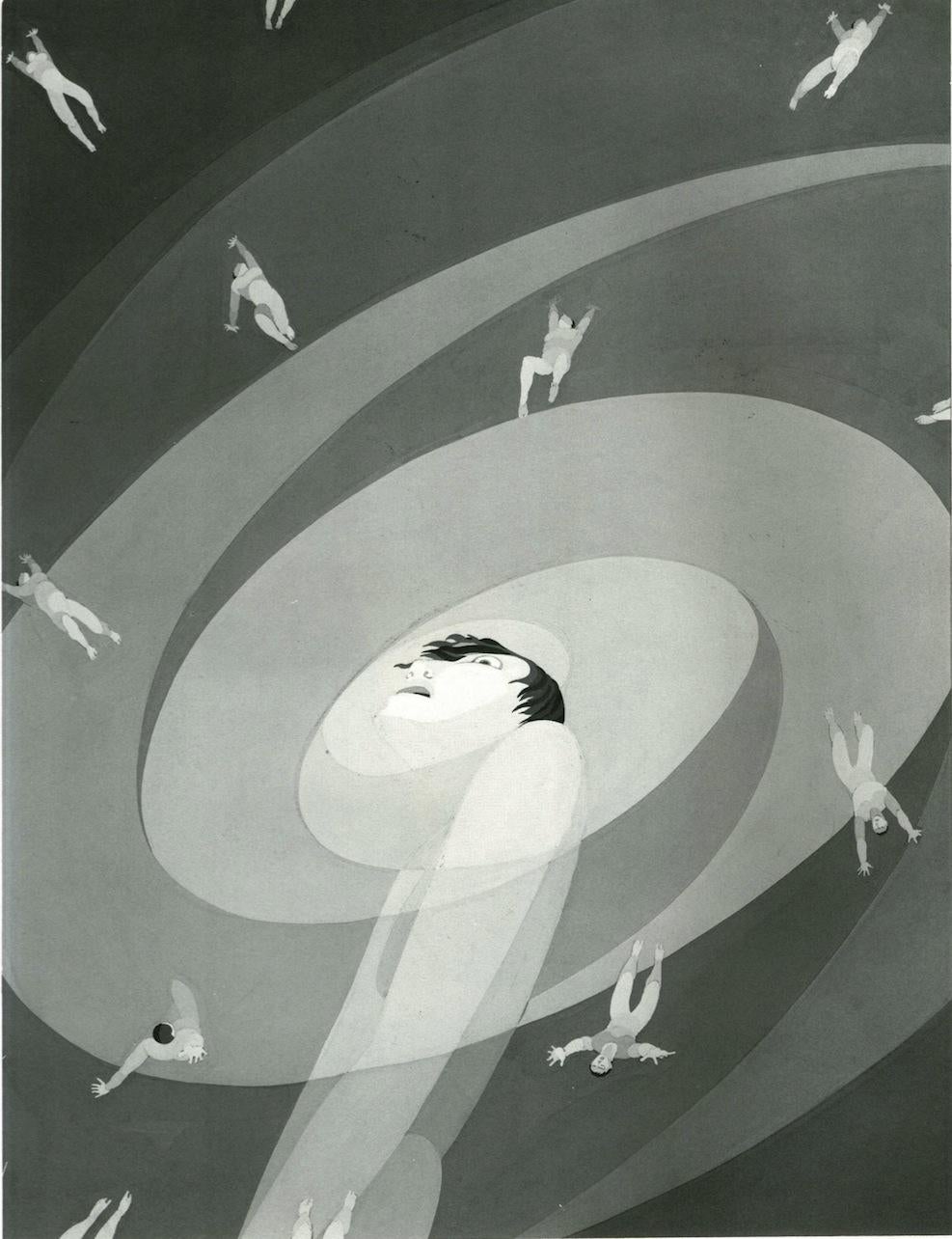
John Vassos, Phobia, 1931.